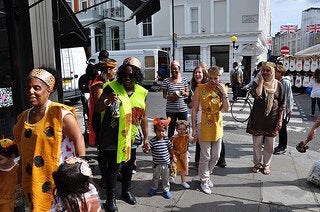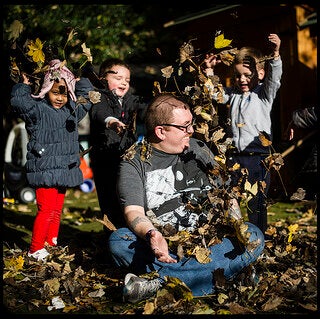Colleagues in the youth and children's sector have raised concerns about how the Anti-social Behaviour, Crime and Policing Bill currently being debated in the House of Lords will affect children's ability to play freely in public. The legislation will affect children aged 10 and older - not the little people we care for at the London Early Years Foundation (LEYF). But it raises an important question for me: just how child-friendly is our society?
I was prompted to consider this question last week when one of my nursery managers emailed me. She was alarmed by what she described as the aggressive treatment of women travelling on public transport with young children by fellow passengers. She reflected on an incident she witnesses at 5pm on a London underground train, where a mother and daughter were berated by a man in a smart suit telling her she should keep her child under control, and should give up her seat.
Another female passenger started muttering and complaining about the child's behaviour, which was no different to any other lively three-year-old on a train journey. Some passengers came to the defence of the mother but it all became rather heated. This mother explained that her daughter was tired after being in nursery all day, they had been up from 5am, and that she was doing her best to keep her child happy and engaged. My nursery manager asked whether we should write to Mayor Boris Johnson and suggest family friendly carriages' for mothers with young children travelling during rush hour.

But that would not solve the broader problem about our society's view of children and the norms of public behaviour. As someone running a group of nurseries with a central ethos that staff are expected to take the children out regularly, we are often approached by strangers and complimented about how well behaved the children are. But what is good behaviour?
For the most part the children are calm and well-mannered, stick to the rules to walk nicely, hold hands and pay attention to their surroundings. Parents often comment in amazement that we take the children to art galleries, public events, shops, markets, parks and on buses and trains to visit other LEYF nurseries for shared activities. Like any good nursery, we prepare the children, agree our code of behaviour, warn them about keeping safe and then equip ourselves with all that will ensure the trip is happy. That means toys, drinks, correct clothing and other paraphernalia.
We do this because we have agreed a set of behaviours which we believe will show the children in the best light. This means small people are able to share the public space in a way that is respectful to other people.
However, this is not necessarily a shared aspiration. Some adults are confused about what child-friendly means. Many adults think children are happiest with no limits on their behaviour and assume that because they like their children, everyone else will. Many adults fail to understand the developmental needs of children and take them to events and places that have little to offer children, such as busy markets where the child sees little except bags and knees. Try being in a buggy in a crowd!
How many restaurants have you been to where there has been no attempt to either expect the child to stay in their seat or to provide them with an activity that would keep them busy? Adult-to-adult conversation is of very little interest to children.

We need to have a conversation about what child-friendly means. It involves understanding the adult's role in guiding the child's behaviour, as well as accepting our responsibility to share the task of rearing children. It also means modelling good behaviour ourselves.
It does indeed take a village to raise a child. Children will only understand what is expected of them when we set clear parameters about what child-friendly looks like.
